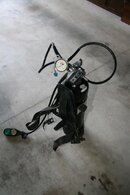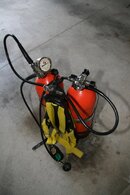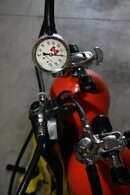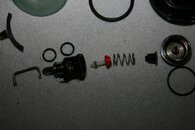victorzamora
Contributor
lowviz, this is the only time John Ratliff mentioned why he needed this setup.
As I said before, modern regs should be able to provide PLENTY of air....even at depth. At 27ft (as he claimed), any reg should be able to provide enough air. If he's exerting himself enough to NEED more than that amount, then there's a lot of danger there regardless of tank config. If he's within easy CESA depth, and that's your main backup plan.....then why worry about redundancy at all?
I agree, this is an interesting concept that I hadn't considered before. That doesn't make it better. Not all change is progress.
I dive in a river, in high current where regulator performance is crucial. The setup allows twice the air available at the second stage as other configurations. This is done with a regulator that I bought new in the 1980s. But the A.I.R. I would be hard to beat without this configuration by any of the newer regulators today. My point is that this is a redundant system, with the limitation of the O-ring/LP hose failure that has been pointed out. Yes, it is complex, and yes, probably unnecessary for most diving. My whole point was that it was a possibility that may not have been considered by any of you before, and it worked and worked well.
As I said before, modern regs should be able to provide PLENTY of air....even at depth. At 27ft (as he claimed), any reg should be able to provide enough air. If he's exerting himself enough to NEED more than that amount, then there's a lot of danger there regardless of tank config. If he's within easy CESA depth, and that's your main backup plan.....then why worry about redundancy at all?
I agree, this is an interesting concept that I hadn't considered before. That doesn't make it better. Not all change is progress.








